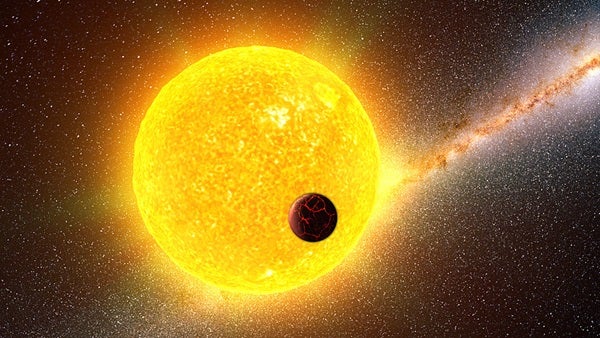Prior to Kepler’s launch in March 2009, astronomers had identified the changes in brightness, or oscillations, of about 25 stars similar to our Sun in size, age, composition, and location within the Milky Way Galaxy.
Scientists say Kepler is a big boost to asteroseismology, the study of stars by observations of their natural oscillations. Those oscillations provide clues about star basics such as mass, radius, and age, as well as clues about the internal structure of stars.
“This helps us understand more about the formation of stars and how they evolve,” said Steve Kawaler from Iowa State University in Ames. “These new observations allow us to measure the detailed properties of stars at an accuracy that wasn’t possible before.”
The Kepler spacecraft is orbiting the Sun carrying a photometer, or light meter, to measure changes in star brightness. The photometer includes a telescope 37 inches (94 centimeters) in diameter connected to a 95-megapixel CCD camera. The instrument is continually pointed at the Cygnus-Lyra region of the Milky Way. It is expected to continuously observe about 170,000 stars for at least 3.5 years.
Kepler’s primary job is to use tiny variations in the brightness of the stars within its view to find earthlike planets that might be able to support life.
The Kepler Asteroseismic Investigation is using Kepler data to study different kinds of stars. Data from 500 Sun-like stars gives astronomers a much better understanding of the stars, their properties, and their evolution. It also gives astronomers data to test their theories, models, and predictions about the stars and the galaxy. And it gives astronomers enough data to make meaningful statistical studies of the stars.
“But this is just the start of things,” Kawaler said. “This is a first broad-brush analysis of the data we’ve seen. This is a preview of this new tool and the kind of detailed census that we’ll be able to do.”
Prior to Kepler’s launch in March 2009, astronomers had identified the changes in brightness, or oscillations, of about 25 stars similar to our Sun in size, age, composition, and location within the Milky Way Galaxy.
Scientists say Kepler is a big boost to asteroseismology, the study of stars by observations of their natural oscillations. Those oscillations provide clues about star basics such as mass, radius, and age, as well as clues about the internal structure of stars.
“This helps us understand more about the formation of stars and how they evolve,” said Steve Kawaler from Iowa State University in Ames. “These new observations allow us to measure the detailed properties of stars at an accuracy that wasn’t possible before.”
The Kepler spacecraft is orbiting the Sun carrying a photometer, or light meter, to measure changes in star brightness. The photometer includes a telescope 37 inches (94 centimeters) in diameter connected to a 95-megapixel CCD camera. The instrument is continually pointed at the Cygnus-Lyra region of the Milky Way. It is expected to continuously observe about 170,000 stars for at least 3.5 years.
Kepler’s primary job is to use tiny variations in the brightness of the stars within its view to find earthlike planets that might be able to support life.
The Kepler Asteroseismic Investigation is using Kepler data to study different kinds of stars. Data from 500 Sun-like stars gives astronomers a much better understanding of the stars, their properties, and their evolution. It also gives astronomers data to test their theories, models, and predictions about the stars and the galaxy. And it gives astronomers enough data to make meaningful statistical studies of the stars.
“But this is just the start of things,” Kawaler said. “This is a first broad-brush analysis of the data we’ve seen. This is a preview of this new tool and the kind of detailed census that we’ll be able to do.”










